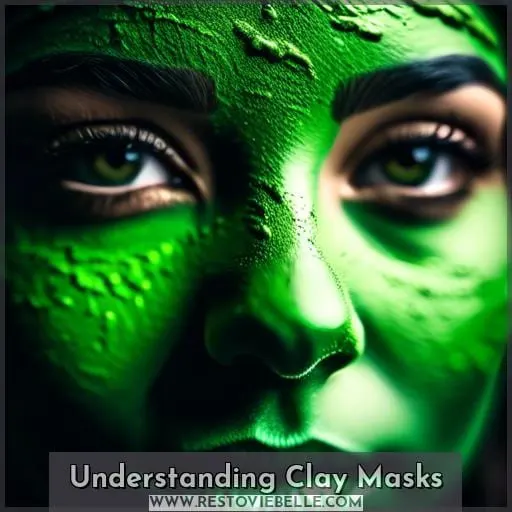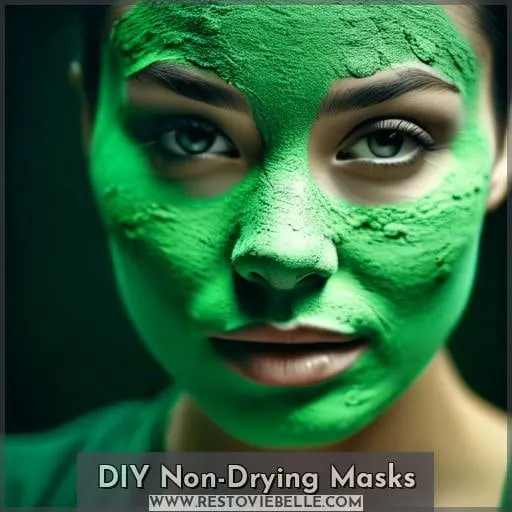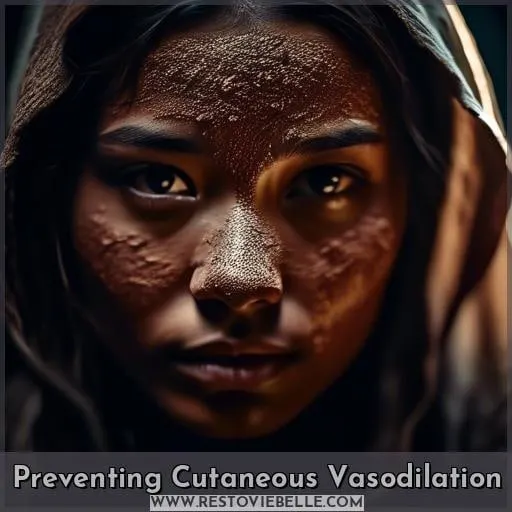This site is supported by our readers. We may earn a commission, at no cost to you, if you purchase through links.
 Navigating the world of skincare, clay masks emerge as a potent ally for detoxifying and rejuvenating your complexion. Whether you’re battling excess oil, seeking a mineral boost, or aiming for a deep cleanse, understanding the right duration to leave a clay mask on is crucial.
Navigating the world of skincare, clay masks emerge as a potent ally for detoxifying and rejuvenating your complexion. Whether you’re battling excess oil, seeking a mineral boost, or aiming for a deep cleanse, understanding the right duration to leave a clay mask on is crucial.
With varieties like Kaolin, Bentonite, and French Green, each offers unique benefits. Yet, the golden rule remains: 10-15 minutes is optimal for most skin types. Straying beyond can invite dehydration and irritation, undermining the very benefits you seek.
Let’s dive into maximizing the detox safely, ensuring your skin reaps all the goodness without the backlash.
No, you should not leave a clay mask on for too long. The recommended time to leave a clay mask on is around 10 minutes.
Table Of Contents
- Key Takeaways
- Understanding Clay Masks
- Application Techniques
- Timing is Key
- Risks of Overuse
- DIY Non-Drying Masks
- Preventing Cutaneous Vasodilation
- Aftercare
- Weekly Routine
- Frequently Asked Questions (FAQs)
- Can using a clay mask affect the pH balance of my skin?
- Is it safe to use a clay mask if I have a skin condition like eczema or rosacea?
- Can clay masks be used as a treatment for hair and scalp issues?
- How do different types of clay in masks affect my skin?
- What are the implications of the mask drying phase on my skin?
- Conclusion
Key Takeaways
- The optimal duration for clay mask application is 10-15 minutes to avoid over-drying the skin and to ensure effective detoxification and nourishment.
- Removing the mask during the initial drying stage, before it fully dries, prevents the absorption of essential water from the skin barrier, maintaining hydration levels.
- Limiting clay mask use to once a week helps avoid skin irritation and allows for observation of skin response to adjust frequency accordingly.
- A patch test is recommended before using a new clay mask, especially for individuals with sensitive skin or conditions like eczema or rosacea, to avoid adverse reactions.
Understanding Clay Masks
Clay masks, including types like Kaolin, Bentonite, Rhassoul, French Green, and Activated Charcoal, offer a range of benefits for your skin.
To maximize these advantages, it’s crucial to know how long to leave a clay mask on for safe and effective skin detoxification.
Types of Clay: Kaolin, Bentonite, Rhassoul, French Green, Activated Charcoal
When considering the various types of clay masks, it’s important to select one that aligns with your skin’s needs. Kaolin clay is gentle and suitable for all skin types, making it a versatile choice for those seeking a mild option.
Bentonite clay, also known as Montmorillonite, is a powerful detoxifier that’s great for deep-cleansing and absorbing impurities, particularly beneficial for oily skin. Rhassoul clay, rich in minerals, offers exfoliating properties, while French Green clay is known for its detoxifying benefits, purifying the skin.
Activated Charcoal clay is excellent for oil absorption and toxin removal, ideal for those with acne-prone skin.
When using clay masks, it’s crucial to avoid overuse to prevent skin dehydration and irritation. The optimal duration for most skin types is between 10-15 minutes, ensuring the mask is removed before it reaches the final drying stage, which can absorb too much moisture from the skin.
To enhance the mask’s benefits and prevent cutaneous vasodilation, consider adding glycerin, a humectant that retains moisture and prevents the clay from fully drying on the skin.
In summary, choose a clay mask type that’s compatible with your skin, pay attention to mineral absorption, and be mindful of overuse prevention to maximize the detoxifying benefits without compromising skin health.
Benefits for Skin: Absorbs Excess Oil, Detoxifies, Provides Minerals
Clay masks are a staple in skincare routines for their ability to purify and rejuvenate the skin. They work by absorbing excess oil, drawing out impurities, and delivering essential minerals to the skin.
-
Absorbs Excess Oil: Clay masks are highly effective at removing unwanted sebum from the skin’s surface, preventing the buildup that can lead to acne and blemishes.
-
Detoxifies: The natural properties of clay allow it to bind with and remove toxins and impurities from the skin, leaving it clean and refreshed.
-
Provides Minerals: Many clay types are rich in minerals that can nourish the skin, contributing to its overall health and resilience.
-
Skin Purification: By removing impurities and excess oil, clay masks help to purify the skin, reducing the appearance of pores and improving skin texture.
Incorporating a clay mask into your skincare routine can offer these detoxification benefits, contributing to clearer, more balanced skin. However, it’s important to choose a mask suited to your skin type and to follow the recommended usage to avoid over-drying or irritating your skin.
Application Techniques
When preparing to apply a clay mask, it’s essential to mix it into a smooth paste using water or apple cider vinegar for optimal consistency.
Apply the mask evenly across your face with a brush or your fingers, ensuring coverage is neither too thick nor too thin.
Creating the Paste: Mixing With Water or Apple Cider Vinegar
To create a paste for your clay mask, you’ll want to mix your chosen clay with a liquid. The mixing ratio is crucial for achieving the right consistency. While water is a common choice, apple cider vinegar is often preferred, especially with bentonite clay, due to its ability to create a smoother mixture and offer additional skin benefits like pH balance and gentle exfoliation.
However, be mindful of the water comparison; water can make the mixture clumpy and difficult to apply, whereas apple cider vinegar tends to create a smoother paste.
Adding glycerin, a humectant, can prevent the clay mask from over-drying the skin. Glycerin helps to maintain skin barrier function and prevents skin redness by keeping the mask moist and preventing full drying, which can lead to cutaneous vasodilation.
Here’s a table to help visualize the differences:
| Ingredient | Purpose |
|---|---|
| Bentonite Clay | Absorbs impurities |
| Apple Cider Vinegar | Enhances consistency, provides pH balance |
| Water | Can be used, but may lead to clumping |
| Glycerin | Acts as a humectant, prevents over-drying |
| Mixing Ratio | Typically 1 part clay to 2 parts liquid |
Applying the Mask: Using a Brush or Fingers for Even Coverage
When applying a clay mask, it’s important to use the right technique to ensure even coverage and prevent skin irritation, such as cutaneous vasodilation.
- Use a brush with soft bristles made of materials like natural boar hair to ensure a gentle application without irritating the skin.
- Aim for a brush size that allows for precision, with a fan width that’s suitable for your face size to achieve an even layer.
- Apply the mask using the brush in smooth strokes, covering all areas but avoiding the eyes and mouth for safety.
Timing is Key
When using a clay mask, it’s crucial to time the application correctly. Aim to keep the mask on for 10-15 minutes, which allows your skin to absorb the minerals without over-drying.
The mask should be removed before it fully dries to avoid dehydration and irritation of the skin.
Optimal Duration: 10-15 Minutes for Most Skin Types
After mixing your clay mask to the right consistency and applying it evenly, it’s crucial to monitor the drying time for optimal results.
Aim to keep the mask on for 10-15 minutes, especially if you’re new to clay masks or have skin sensitivity. This duration allows the mask to absorb excess oil and dirt without over-drying your skin.
Keeping an eye on moisture balance is key; remove the mask before it reaches the final drying stage to prevent dehydration and reduce the risk of redness.
Drying Stages: Wet, Initial Drying, Final Drying
To maximize the benefits of a clay mask and avoid potential skin irritation, it’s crucial to understand the drying stages and timing of application.
Initially, when you apply the mask, it’s wet, allowing your skin to absorb the minerals. As it begins to dry, the mask starts absorbing excess oil and dirt, which is the initial drying stage.
However, you should be cautious not to let it reach the final drying stage, where it hardens and cracks. This stage can strip away not only impurities but also essential hydration from your skin, leading to dehydration and possibly irritation.
To prevent this, remove the mask while it’s still slightly tacky to the touch, typically after about 10-15 minutes, before it fully dries and cracks. This ensures that your skin reaps the absorbing benefits without losing vital moisture, keeping your skin healthy and preventing premature aging.
Risks of Overuse
Leaving a clay mask on for too long can lead to dehydration and irritation of your skin. This overexposure can cause inflammation and redness, signaling that your skin may be under stress.
It’s crucial to monitor the time you keep your clay mask on to avoid these adverse effects and ensure a safe and beneficial detoxifying experience.
Dehydration and Irritation: Consequences of Prolonged Exposure
Leaving a clay mask on for too long can lead to dehydration and irritation of the skin. Overexposure to the drying effects of clay can strip the skin of its natural oils, resulting in dryness and redness.
It’s important to remove the mask before it reaches the final drying stage, which can absorb essential moisture and cause discomfort. To avoid these adverse effects, aim to keep the mask on for the recommended 10-15 minutes, depending on your skin type and sensitivity.
This will help maintain the balance of oil and hydration in your skin, preventing the negative consequences of prolonged exposure.
Inflammation and Redness: Signs of Overexposure
If your skin turns red and feels inflamed after using a clay mask, it’s a sign you’ve left it on too long. This overexposure can mimic an allergic reaction, with symptoms like a blood pressure drop.
It’s crucial to maintain skin barrier function to prevent issues like premature aging. To avoid these risks, ensure you’re not stripping away essential moisture. Proper skin hydration is key; always remove the mask before it fully dries to protect your skin’s health.
DIY Non-Drying Masks
To create a DIY non-drying clay mask that maximizes skin detox safely, incorporating glycerin is key.
Glycerin, a powerful humectant, helps to attract and retain moisture in the skin, preventing the clay from drying out and cracking.
This approach ensures that the mask remains effective in drawing out impurities without dehydrating the skin, making it a crucial component for a balanced and gentle skincare routine.
Incorporating Glycerin: Prevents Drying and Cracking
To prevent your clay mask from over-drying and causing irritation or redness, incorporate glycerin into your DIY mask formula. Glycerin, a humectant, attracts and retains moisture, which not only prevents the mask from cracking but also provides hydration to your skin.
This addition ensures that the mask remains creamy and easier to apply, enhancing the mask’s benefits without inducing cutaneous vasodilation. Remember, prevention is key; never leave a clay mask on for more than 15 minutes to avoid compromising your skin’s barrier function and causing premature aging.
By adding glycerin, you can enjoy the purifying effects of your clay mask without the risk of dehydration or irritation.
Humectants: Attract and Retain Moisture
Humectants, like glycerin, are key for moisture retention, crucial for maintaining skin health. They work by attracting water molecules, ensuring your skin stays hydrated and preventing dryness.
This is particularly important when using clay masks, as they can strip the skin of its natural oils. By incorporating glycerin into your mask, you’re not only preventing the mask from hardening but also providing your skin with the hydration it needs to remain healthy and resilient.
Preventing Cutaneous Vasodilation
To prevent cutaneous vasodilation and ensure your skin reaps the benefits of a clay mask without irritation, it’s crucial to avoid letting the mask fully dry on your face.
Adding glycerin to your clay mask mixture can help maintain moisture, preventing the mask from drying out and causing skin irritation.
This approach not only keeps your skin hydrated but also avoids the potential for redness and discomfort associated with fully dried clay masks.
Avoid Full Drying: to Prevent Skin From Becoming Red Hot
To ensure you’re using clay masks safely and effectively, it’s crucial to avoid letting them fully dry on your face. This practice can lead to cutaneous vasodilation, where blood rushes to the skin’s surface, potentially causing a drop in blood pressure and symptoms similar to an allergic reaction.
Moreover, the skin’s emergency mechanism against hypothermia isn’t a pathway to great skin, and over-drying can harm the skin barrier, leading to premature aging.
- Mix your clay mask with equal parts glycerin and water to maintain hydration.
- Apply the mask evenly, avoiding excessive thickness.
- Remove the mask during the initial drying stage, before it fully dries.
- Limit use to once a week to protect your skin’s natural oils and hydration levels.
Glycerin Benefits: Adds Moisture, Prevents Irritation
To seamlessly transition from the importance of avoiding full drying of clay masks, let’s delve into the benefits of glycerin. Glycerin, a humectant, plays a pivotal role in adding moisture and preventing irritation, crucial for maintaining skin health.
Its ability to draw moisture from the air into the skin helps prevent the dryness and irritation often associated with clay masks. Incorporating glycerin into your skincare routine, especially in clay masks, can significantly enhance skin hydration, making it an essential ingredient for those seeking to avoid cutaneous vasodilation and the discomfort it brings.
Here’s a quick overview of glycerin’s key benefits:
| Property | Benefit | Impact on Skin |
|---|---|---|
| Humectant | Adds moisture | Prevents dryness |
| Prevents irritation | Reduces redness | Enhances comfort |
| Versatile | Easy to incorporate | Suitable for DIY masks |
By understanding and utilizing glycerin’s properties, you can ensure your skin remains hydrated and irritation-free, especially when using clay masks. This approach not only maximizes the benefits of your skincare routine but also aligns with the desire for understanding, safety, and control over one’s skin health.
Aftercare
After applying a clay mask, it’s crucial to remove it properly to avoid skin dehydration.
Use warm water and a gentle cleanser to wash off the mask in a soft, circular motion.
Following removal, immediately moisturize to restore hydration to your skin.
Removal and Cleansing: Warm Water and Gentle Cleanser
After discussing the importance of preventing cutaneous vasodilation by not allowing a clay mask to fully dry on your skin, it’s crucial to address the proper removal and cleansing process.
Once you’ve enjoyed the benefits of your clay mask within the recommended time frame, it’s time to gently remove it. Start by rinsing your face with warm water, which helps to soften the mask for easier removal.
Use a gentle cleanser to ensure that all traces of the clay are washed away without stripping your skin of its natural oils. This step is vital for maintaining the skin’s balance and preventing irritation.
Moisturizing: Essential for Restoring Hydration
After you’ve gently removed your clay mask with warm water, it’s crucial to restore hydration to your skin.
The detoxifying effects of the mask, while beneficial for excess oil removal, can also strip away some moisture. To prevent skin irritation and maintain a healthy skin barrier, apply a moisturizer immediately after.
This step is essential, especially if you’re experimenting with DIY mask creation, as it helps to lock in moisture and soothe the skin. Opt for a hydrating formula that suits your skin type to ensure that the nourishing minerals from the clay mask are complemented by adequate hydration, keeping your skin soft and supple.
Weekly Routine
When incorporating clay masks into your skincare routine, it’s essential to use them correctly to avoid irritation and maximize benefits.
Limiting their use to once a week is advisable to prevent potential skin irritation. Observing how your skin responds to the mask is crucial; you may need to adjust the frequency based on your individual skin needs.
This approach ensures that you reap the detoxifying benefits of clay masks without compromising your skin’s health.
Frequency: Limit to Once a Week to Avoid Irritation
To maintain your skin’s health and avoid irritation, it’s crucial to tailor the frequency of your clay mask applications to your skin type and its specific needs.
- For oily skin: You’re in luck! Your skin can benefit from using a clay mask up to three times a week. The mask’s ability to absorb excess oil and detoxify the skin helps in managing acne and keeping the skin clear.
- For sensitive skin: Proceed with caution. Opt for a clay mask once a week to enjoy its benefits without overwhelming your skin. Look for masks with soothing ingredients to minimize potential irritation.
- For dry skin: Limit your clay mask usage to once a week at most. Since clay masks can absorb moisture, it’s essential to follow up with a hydrating moisturizer to keep your skin balanced and prevent dehydration.
Observing Skin Response: Adjusting Based on Individual Skin Needs
When using clay masks, it’s crucial to pay attention to your skin’s response and adjust your routine to suit your individual needs. Skin sensitivity varies widely, and what works for one person may not be suitable for another.
If you’re trying a new clay mask, start with allergy testing to ensure you don’t have an adverse reaction. A simple patch test can help determine if the mask’s ingredients are compatible with your skin.
If you notice any signs of irritation, such as redness, itching, or burning, it’s wise to consult a dermatologist. They can provide personalized advice and help you understand your personal tolerance to different skincare products.
Remember, the goal is to achieve a balanced and healthy complexion without causing harm or discomfort to your skin.
Frequently Asked Questions (FAQs)
Can using a clay mask affect the pH balance of my skin?
Yes, using a clay mask can affect the pH balance of your skin.
Clays like bentonite are more alkaline, while kaolin is closer to the skin’s natural pH.
Balancing the mask’s pH with ingredients like apple cider vinegar can help.
Is it safe to use a clay mask if I have a skin condition like eczema or rosacea?
If you have eczema or rosacea, using a clay mask could be risky. These conditions make your skin sensitive. Clay masks, especially if left on too long or used too frequently, might irritate or dry out your skin further.
Always patch test first and consider consulting a dermatologist.
Can clay masks be used as a treatment for hair and scalp issues?
Yes, clay masks can help with hair and scalp issues by absorbing excess oil, removing impurities, and promoting scalp health.
However, it’s crucial to choose the right clay type and not overuse it.
How do different types of clay in masks affect my skin?
Different types of clay masks can have varying effects on your skin due to their unique properties.
Kaolin clay is gentle and suitable for all skin types, absorbing excess oil without over-drying.
Bentonite clay, on the other hand, is highly absorbent, making it ideal for oily skin as it can remove impurities and toxins.
Rhassoul clay, rich in minerals, offers exfoliation and detoxification benefits.
Each clay type caters to specific skin needs and concerns.
What are the implications of the mask drying phase on my skin?
The drying phase of a clay mask can draw out impurities and excess oil.
If left until it cracks, it may dehydrate your skin, causing irritation and redness.
It’s crucial to remove the mask before it fully dries to avoid these negative effects.
Conclusion
Navigating the skincare landscape can be a maze, but with clay masks as your compass, you’ll find your way to radiant skin.
Stick to this ritual weekly, and you’ll notice a more balanced, detoxified complexion.












